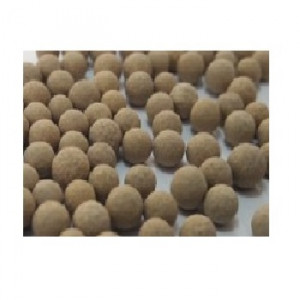| Spadana Nano Pars Co. |

| Registration Date | 7 Mar 2021 |
| Revision Date | 7 Mar 2021 |
| Share |
Petroleum Well Treatment
Hydrogenation catalystGamma alumina is one of the most appropriate materials to be used as hydrogenation process catalyst. Due to superior characteristics such as activity, high purity level, high mechanical and thermal resistance, possessing high porosity and specific area, gamma alumina can be fruitfully used as a catalyst. Such material can be successfully used as the platinum and palladium catalysts support and leads to a significant cost reduction throughout production of hydrogenation process catalysts. Since the catalysts take the role of accelerating kinetics rate of chemical reactions, increasing area to volume ratio considerably enhances catalyst activity. Size reductions as well as having nano pores are some approaches for increasing surface and consequently improvement in catalyst performance.
Hydrogenation is a chemical reaction between molecular hydrogen and one other compound or element that has been found its application in chemical and petrochemical industries. Hydrogenation have been taken into account for strengthening, keeping and refining of many products, raw materials and ingredients such as ammoniac, fuels, alcohols and polymers. Hydrogenation as an endothermic reaction is conventionally done for hydrocarbon material saturation together with catalysts which yields a decrease in double or triple bindings. In the case of absence of catalyst, hydrogen molecule stays inactive with respect to organic compounds. Catalysts can be categorized in two types of homogenous (with the potential of dissolving in solution containing non-saturated) and heterogeneous (with the capability of suspension formation). Palladium, platinum and Rhodium are some active catalysts that can be operative at low temperature and low H2 pressure but with an expensive cost. Other metallic catalysts are also applied in the hydrogenation processes that are with lower kinetics and higher working temperatures.
For the fabrication of precious metals catalysts, they are accommodated on the supports like alumina of calcium carbonate in form of fine-grained powders which are reasonable in price, voluminous and porous. Gamma alumina is one of the most appropriate materials to be used as hydrogenation process catalyst. Due to superior characteristics such as activity, high purity level, high mechanical and thermal resistance, possessing high porosity and specific area, gamma alumina can be fruitfully used as a catalyst. Such material can be successfully used as the platinum and palladium catalysts support and leads to a significant cost reduction throughout production of hydrogenation process catalysts.
Since the catalysts take the role of accelerating kinetics rate of chemical reactions, increasing area to volume ratio considerably enhances catalyst activity. Size reductions as well as having nano pores are some approaches for increasing surface and consequently improvement in catalyst performance.